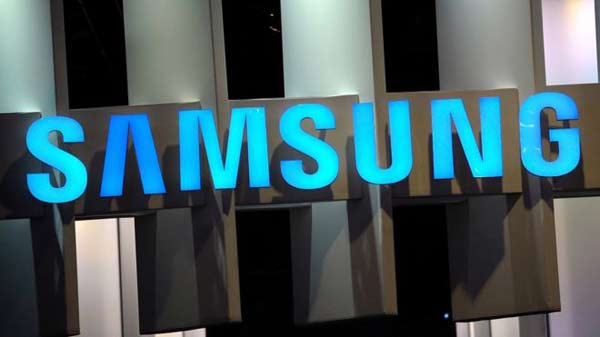
Washington, US (BBN) - A unanimous Supreme Court ruled on Tuesday that Samsung may not have to give up $399 million in profits for copying parts of the distinctive look of Apple’s iPhone.
A federal law says that companies found liable for infringing design patents on an “article of manufacture” are liable for their total profits, reports the New York Times.
The decision in Samsung Electronics Co v Apple Inc, No 15-777, turned on the meaning of the quoted phrase.
Writing for the court, Justice Sonia Sotomayor said an article of manufacture may sometimes be the entire product sold to consumers - here, Samsung’s phones - and sometimes be the components found to have infringed a design patent.
Apple’s patents covered specific design elements of the iPhone, including its black rectangular front face with rounded corners and its colorful grid of 16 icons.
A jury found in 2012 that Samsung had infringed those patents.
“All told,” Justice Sotomayor wrote, “Apple was awarded $399 million in damages for Samsung’s design patent infringement, the entire profit Samsung made from its sales of the infringing smart-phones.”
Design patents, which address what products look like, are far less common than utility patents, which cover how products work.
The Supreme Court had not heard a design patent case in over a century.
Last year, the United States Court of Appeals for the Federal Circuit, a specialised court that handles patent appeals, ruled that the federal law “explicitly authorises the award of total profit from the article of manufacture bearing the patented design.”
The appeals court appeared to acknowledge the possibility that “an award of a defendant’s entire profits for design patent infringement makes no sense in the modern world.”
But it added that “those are policy arguments that should be directed to Congress.”
“We are bound by what the statute says, irrespective of policy arguments that may be made against it,” the appellate court said.
Justice Sotomayor’s opinion did not resolve the question of whether the article of manufacture at issue in the case was the whole phone or just parts of it.
She said only that the Federal Circuit had been wrong to rule that “the relevant ‘article of manufacture’ must always be the end product sold to the consumer.”
“In the case of a design for a single-component product, such as a dinner plate, the product is the ‘article of manufacture’ to which the design has been applied,” Justice Sotomayor wrote.
“In the case of a design for a multicomponent product, such as a kitchen oven, identifying the ‘article of manufacture’ to which the design has been applied is a more difficult task.”
The Supreme Court returned the case to the Federal Circuit for further consideration, drawing out the final resolution of a case that has transfixed Silicon Valley since it was filed in 2011.
Technology companies often imitate innovations made by their rivals and incorporate hundreds or thousands of patented ideas in a new product.
The largest companies often cross-license their patents to one another to minimise infringement claims.
The Supreme Court battle between Apple and Samsung centered on what happens when the infringement involves just a few features of a product’s design.
Apple - backed by dozens of independent designers as well as fashion-focused companies like Nike and Tiffany – argued that design is central to many products and that a patent violator should be forced to turn over the full profits it made from infringing designs.
Samsung - whose position was backed by Silicon Valley giants like Google, Facebook, eBay and HP - argued that any penalties should be proportionate to the importance of the infringing features to the overall product.
The Supreme Court’s opinion, while not decisively resolving the case, found that liability in design patent cases is not necessarily an all-or-nothing proposition.
But the justices declined to offer more specific guidance.
So now Apple and Samsung, the two leaders in the smart-phone market, will go back to court to wrangle over the appropriate amount of damages for Samsung’s infringement.
In a statement on Tuesday, Apple said, “Our case has always been about Samsung’s blatant copying of our ideas, and that was never in dispute.” The company added, “We remain optimistic that the lower courts will again send a powerful signal that stealing isn’t right.”
A Samsung spokeswoman, Danielle Meister Cohen, called the court’s decision “a victory for Samsung and for all those who promote creativity, innovation and fair competition in the marketplace.”
Justice Sotomayor’s analysis leaned heavily on dictionaries. “An ‘article’ is just ‘a particular thing,’” she wrote, citing two dictionaries. “And ‘manufacture’ means ‘the conversion of raw materials by the hand, or by machinery, into articles suitable for the use of man’ and ‘the articles so made.’
“An article of manufacture, then, is simply a thing made by hand or machine,” she concluded. “So understood, the term ‘article of manufacture’ is broad enough to encompass both a product sold to a consumer as well as a component of that product.”
Patent lawyers had hoped for a broader ruling about the scope of design patents in the digital age.
“The court basically punted,” said Mark A Lemley, a law professor and director of the Stanford Program in Law, Science and Technology, who had previously filed a brief on behalf of Samsung in the case. “It seems to have clearly in its mind that the patent could cover only a portion of the device. But it said, ‘We’re not going to tell you what the right rule is.’”
Lemley said the ruling was one of several recent patent decisions by the court that struck down patent guidelines used by the Federal Circuit without replacing them with clear alternatives.
In particular, he cited cases involving the awarding of attorney’s fees in patent cases and guidelines for deciding whether a patent has been willfully violated.
BBN/MS/ANS